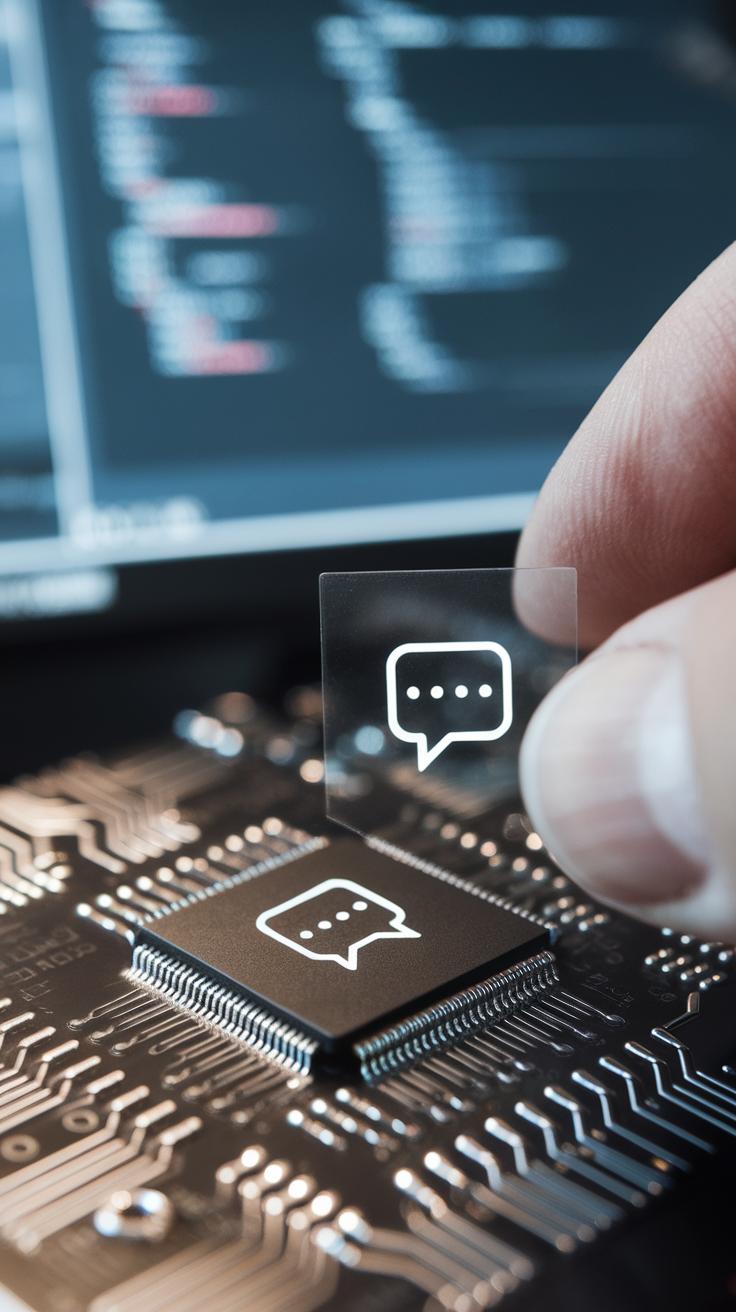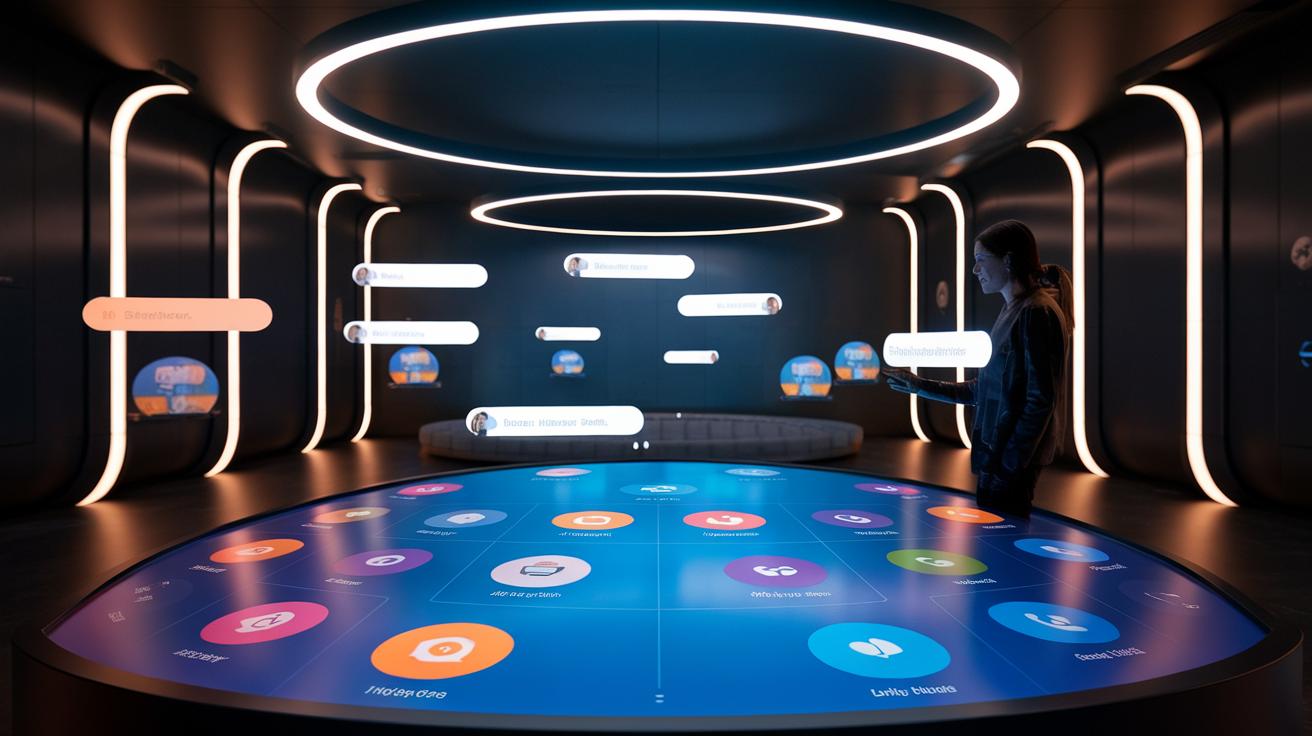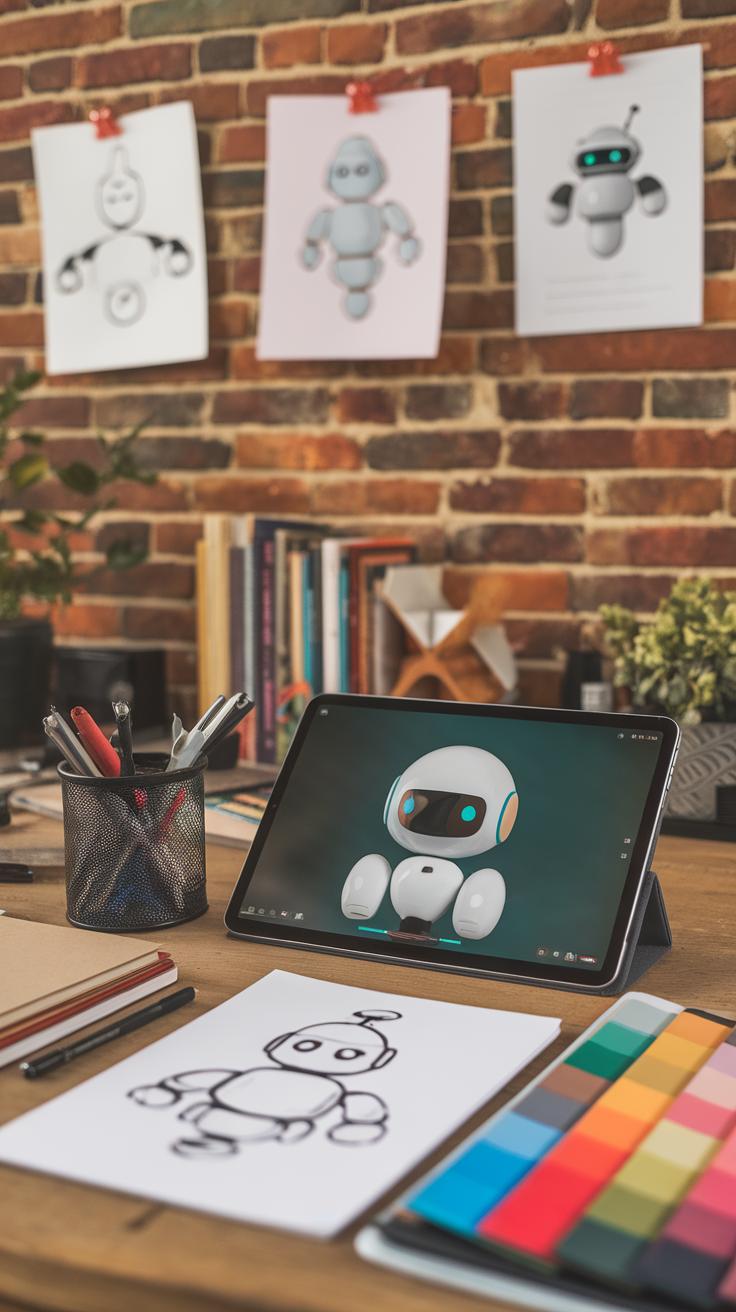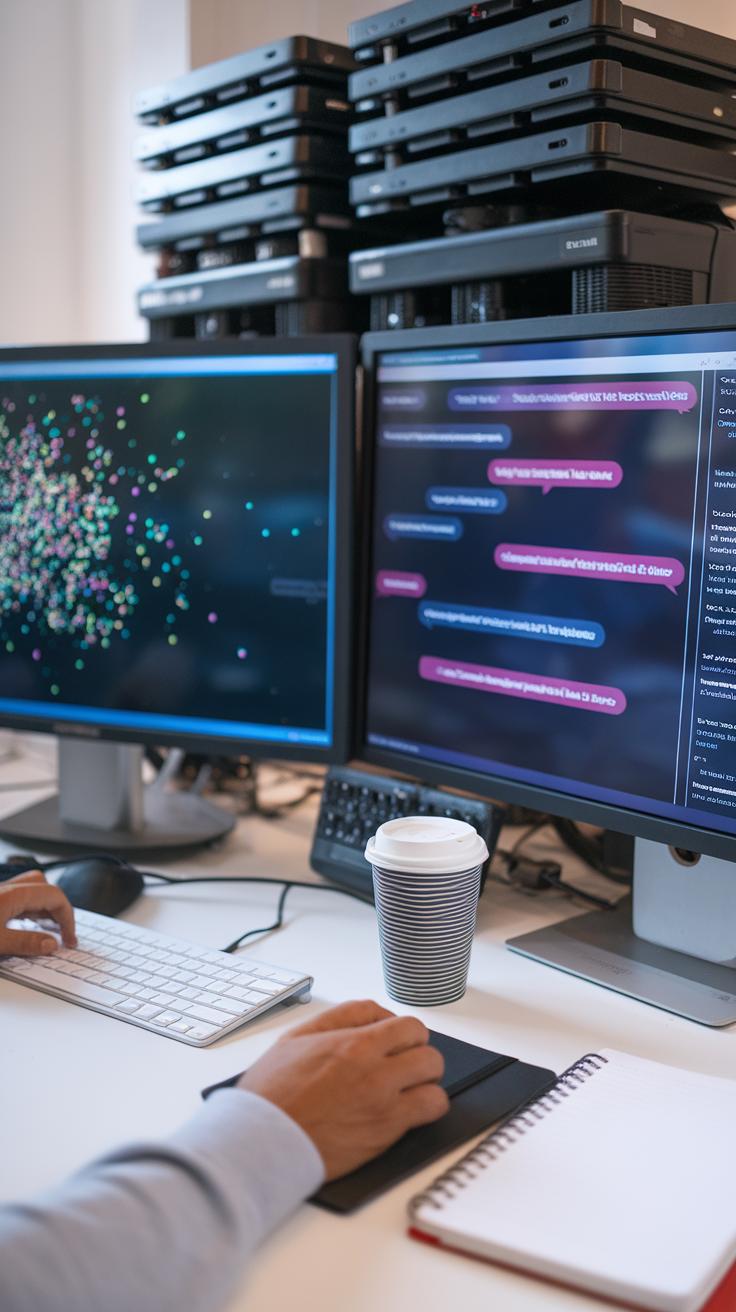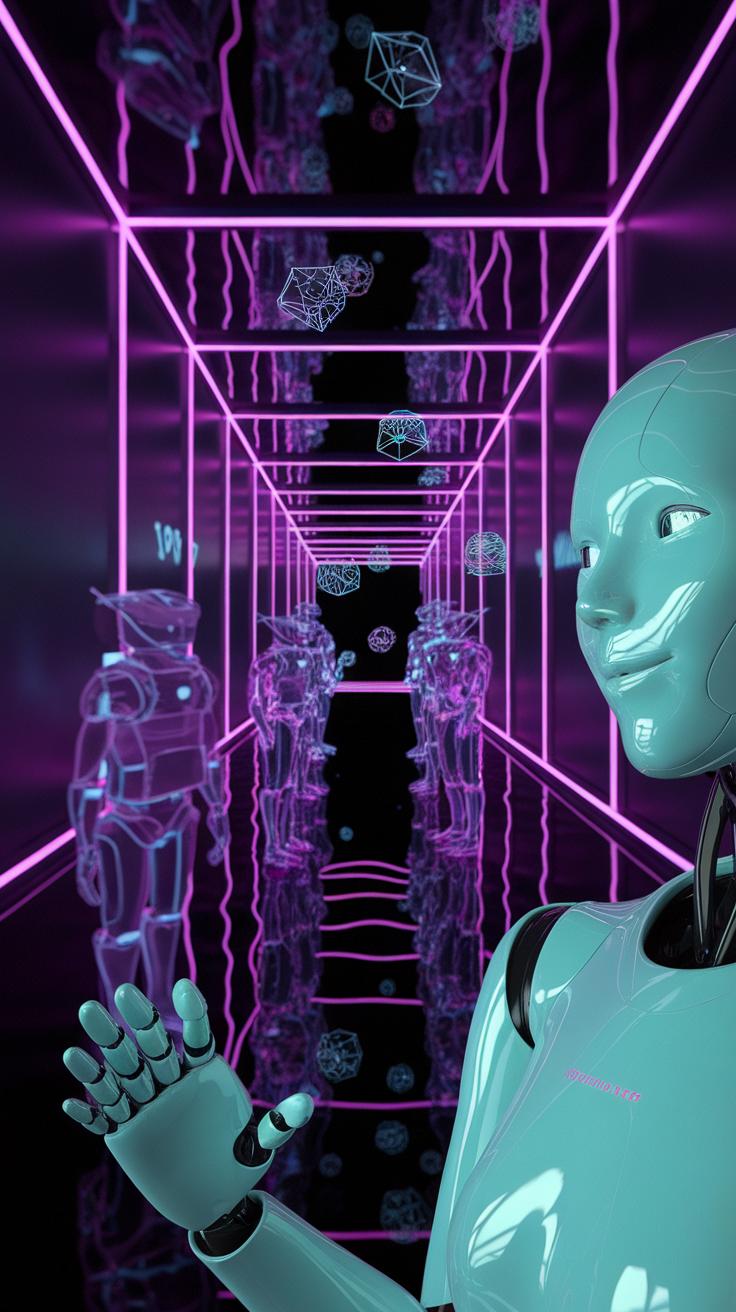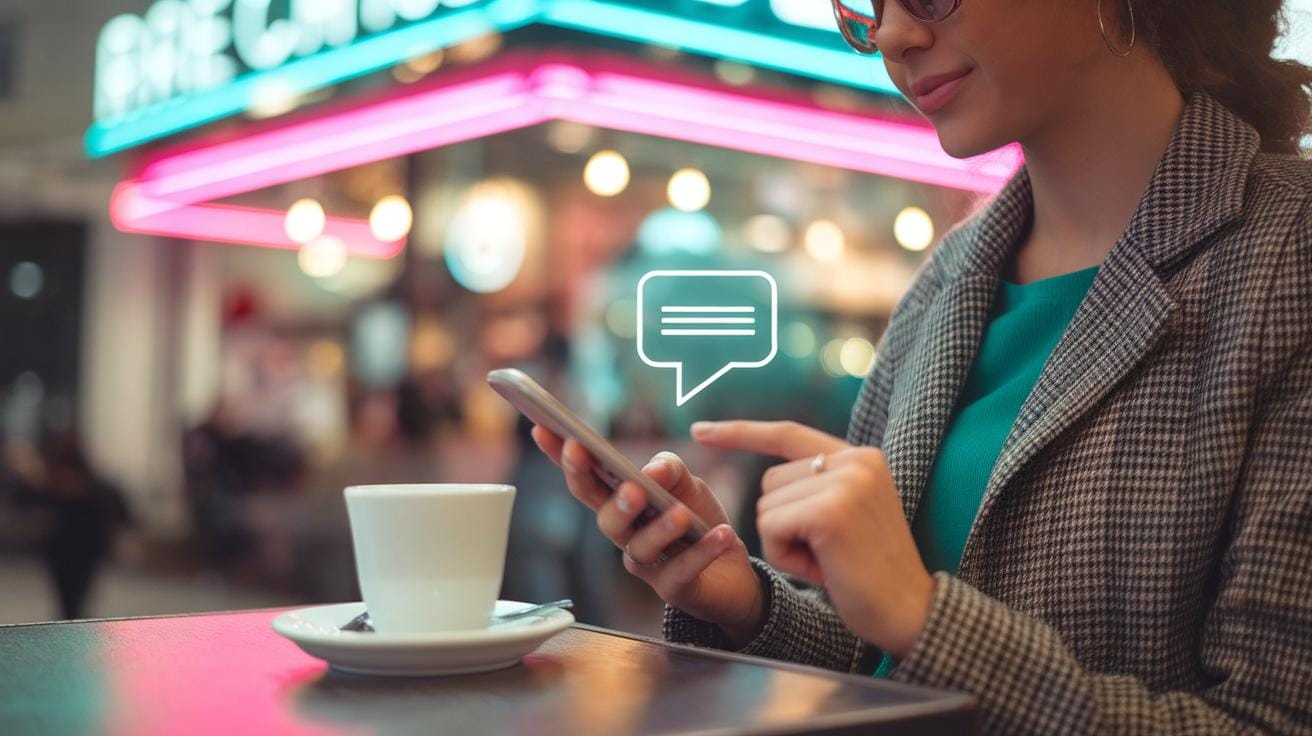Introduction
In today’s technology-driven world, businesses strive for efficiency and quicker service. A custom chat bot can significantly enhance your operations. These automated assistants engage customers, answer queries, and resolve issues anytime. They streamline communication and can adapt to your specific needs.
By implementing a chat bot tailored to your business, you save time and reduce costs. This solution allows your team to focus on critical tasks instead of routine inquiries. Understanding how a custom chat bot functions and how to integrate it effectively is vital. As you read on, you’ll discover how to leverage this technology for improved customer interactions and operational efficiency.
Understanding Chat Bots
Chat bots are computer programs that simulate conversation with users. They use natural language processing to understand and respond to human language. The history of chat bots dates back to the 1960s, starting with simple programs like ELIZA. Over time, they evolved into more complex systems capable of handling various tasks.
There are different types of chat bots. Some are rule-based, following set scripts to handle inquiries. Others, known as AI chat bots, learn from interactions to improve their responses. Custom chat bots differ from standard ones by offering tailored solutions for specific business needs. They can be designed to fit your operational processes and customer interactions.
Recent advancements in AI enhance chat bot capabilities significantly. Machine learning allows them to understand context and emotional tone better. Voice recognition makes interaction even simpler. These improvements enable chat bots to engage more deeply with users, providing a better experience.
Benefits of Custom Chat Bots
Custom chat bots bring numerous advantages to businesses looking to enhance operations. They streamline customer service by providing instant responses to inquiries. Imagine as a customer getting answers 24/7 without waiting. This availability can lead to higher satisfaction rates and loyalty.
Using custom chat bots also reduces operational costs. They handle repetitive tasks and free up your team to focus on complex issues. One study showed that businesses that implemented chat bots saved up to 30% in operational costs. This means more resources for innovation.
Engagement improves significantly with custom chat bots. They can offer personalized recommendations and support. Think about how useful it would be to engage customers in real-time based on their previous interactions. You can create a more tailored user experience that keeps customers returning.
Designing Your Custom Chat Bot
Identifying Needs
Start by identifying your specific needs. What tasks should the chat bot handle? Look at areas where your team spends too much time answering repetitive questions. For instance, if customers often ask about store hours or return policies, this creates an opportunity for automation. Collect feedback from your team and customers. Their input can direct the development process. Think about how a chat bot could streamline common queries or support tasks.
Determining Functionality
Determine the functionality your chat bot requires. Decide whether it should provide information, assist with bookings, or manage customer queries. For example, a travel agency might benefit from a bot that helps users book flights and generate itineraries. Prioritize features that align with your business objectives. Consider integrating features like natural language processing to improve user experience and ensure your bot understands varied phrasing.
Choosing the Right Platform
Select a platform that meets your needs. Look for options that offer customization and integration capabilities. Popular platforms include Dialogflow and Microsoft Bot Framework. Your choice impacts how well the chat bot functions within existing systems. Investigate platforms that provide analytics tools, allowing you to measure performance. This data can help you iterate and improve the bot over time. Make sure the platform fits with your company’s technology stack.
Integration with Existing Systems
Integrating a custom chat bot with your current systems and software is key for driving efficiency. You need to ensure that your bot communicates smoothly with platforms like CRM systems, databases, or customer support tools. Without integration, your chat bot functions in isolation, limiting its usefulness.
Begin by identifying the systems you currently use. Determine which data is essential for your chat bot’s functionality. For example, if your team uses a CRM to manage customer relationships, your chat bot should access that data to provide personalized responses. This creates a better experience for users.
Consider using APIs to connect your chat bot to different platforms. APIs act as bridges, allowing data to flow in both directions. If a customer requires order status updates, the bot can pull information from your order management system, ensuring accurate details are communicated quickly.
Testing integration often reveals gaps that need fixing. Regular updates ensure ongoing compatibility with all your existing systems. How often do you check if your systems work together effectively? Ensuring seamless communication bolsters your overall business efficiency.
Training Your Chat Bot
Training Process
Training a custom chat bot requires careful planning and execution. Begin by collecting data from previous customer interactions. This data helps the chat bot understand various user questions and responses. Use this information to create a training set that covers a wide range of scenarios. Input these scenarios, and define appropriate responses for each. Running simulation tests can reveal where the bot struggles. Adjust the training set based on these findings.
Enhancing Learning Capabilities
Regular updates are vital for a chat bot’s improvement. Monitor conversations to identify common questions and gaps in knowledge. You can refine the bot’s database with new information. Consider using machine learning algorithms that allow the chat bot to learn from each interaction. Each chat is an opportunity for growth. How often do you review and update your chatbot’s knowledge? Continuous refinement leads to a more effective agent that meets user needs efficiently.
Measuring Success
Understanding Key Performance Indicators (KPIs)
You can determine if your custom chat bot is effective by tracking specific metrics. Start with conversation completion rates. This tells you how often users finish their interactions. A high rate indicates your bot effectively guides users.
Response time is another crucial metric. Measure how quickly your bot answers queries. Quick responses lead to better user satisfaction. If the average time exceeds a few seconds, reassess your bot’s performance.
Customer satisfaction scores from post-interaction surveys can provide useful insights. If users report positive experiences, your bot is likely on the right track. Tracking the number of issues resolved without human intervention shows your bot’s efficiency. Strive for continuous improvement based on this feedback.
Setting Benchmarks and Analyzing Data
Establishing benchmarks for these metrics helps shape your goals. Analyze trends over time to identify areas of improvement. Comparing your bot’s performance to industry standards may offer valuable perspective.
Consider the retention rate of users interacting with your bot, too. If users return, it signals they find value. Conduct A/B tests to explore different approaches. Testing can reveal what changes lead to better results.
Using data to measure success allows you to refine your bot’s capabilities. How can these insights help enhance your bot’s functionality? Continuous monitoring keeps your operations smooth and efficient.
Future Trends in Chat Bots
New trends in chat bot technology are shaping the future of business operations. Artificial intelligence continues to advance. This growth enhances chat bots, allowing them to understand and respond to complex queries better than before. More businesses look for solutions that can handle unique customer needs. Custom chat bots can adapt to various languages and tones, making them more user-friendly.
Integration with other technologies is also on the rise. Chat bots now work seamlessly with CRM systems, email platforms, and e-commerce tools. This integration helps streamline workflows and improve customer experiences. For example, a chat bot can assist customers with purchases while accessing their account history for personalized service.
As businesses expand globally, the demand for chat bots that can operate across different cultures and time zones increases. You might wonder how your company can stay ahead in this fast-changing landscape. Investing in chat bot technology that is flexible and scalable will be vital for future success.
Common Mistakes to Avoid
Many businesses face challenges when implementing custom chat bots. One common mistake is not clearly defining the bot’s purpose. You should determine what tasks the chat bot will handle before starting. For example, a help desk bot should focus on answering FAQs instead of trying to sell products.
Another pitfall is neglecting user experience. If your chat bot is difficult to interact with, users will feel frustrated. Testing the bot with real users before launch can help identify issues. Ask questions like, “Is it easy to understand?” and “Does it provide relevant information?”
Overcomplicating the design can also lead to problems. A simple, straightforward chat flow is usually more effective. Limit the number of choices available to avoid overwhelming users. This will keep interactions smooth.
Monitoring the bot’s performance is crucial. Failing to track user interactions can prevent you from improving the chat bot over time. Regularly review conversations to identify trends and areas for enhancement.
Consider data privacy as well. Users need to trust your chat bot with their information. Ensure you comply with all relevant regulations. This builds trust and encourages more engagement.
Case Studies
Real-Life Successes
Many businesses have seen positive changes by adding custom chat bots. One retail company implemented a chat bot to handle customer inquiries. The result was a 30% decrease in response time. Shoppers appreciated quicker answers, leading to higher satisfaction levels and repeat purchases.
Lessons from Experience
A tech startup used a chat bot for tech support. They discovered that targeted training for the bot improved its efficiency. Customers received accurate solutions 90% of the time. This experience shows the importance of ongoing refinement for success.
How can these examples inspire your business? Incorporating a tailored chat bot could streamline your processes and enhance your customer experience. Understanding what works can guide you in crafting a chat bot that fits your unique needs.
Conclusions
Incorporating a custom chat bot into your operations can redefine efficiency. It not only addresses customer inquiries quickly but also frees your team to tackle more complex challenges. By implementing this technology, you stay ahead of the competition in delivering exceptional service.
Investing in a tailored chat bot ensures that your business remains agile and responsive. As you consider this option, think about your specific needs and how a chat bot can fulfill them. Take the next step in improving your operations for lasting success.


